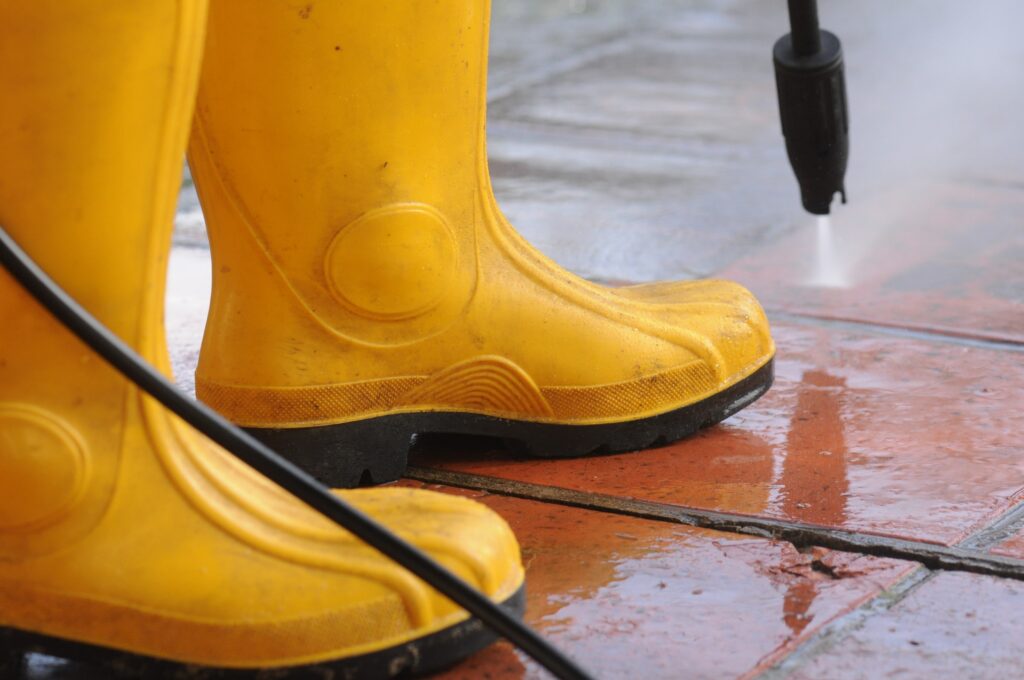After a long and exceptionally tough winter, summer is finally upon us. And with this newfound freedom on our hands, there is plenty to look forward to. Barbecues in the garden, weekend trips to the seaside, perhaps a leisurely round of golf – and even a staycation if you’re lucky. But sadly, the warm weather isn’t all cocktails and 99s. It also signifies the dreaded arrival of pest season. Ant infestations, in particular, tend to rise with the temperatures. And any homeowners who have experienced this problem know how much of a nuisance it is.
The most common species of ants, such as black garden ants, are not considered dangerous nor are they known disease carriers. However, they tend to forage for food outside which can compromise the hygiene of your home. Here’s how to keep your house pest-free this summer and year round.
How to clear up ant infestations
Outdoor source
Your first step is to play detective. Observe the ants to determine where they are coming from. Your best case scenario is that their nest is outside, and they are travelling in and out of your home via a point of entry (e.g. a door or window). In this case, they are likely attracted to a food source inside your house, whether this is a drop of honey or a splash of fruit juice. Clean up whatever is attracting the ants first. Your next move is to eliminate the ants themselves as well as the scent they leave behind. Ants secrete pheromones that give directions to others, creating an invisible breadcrumb trail towards your home. Use a fast-acting, high-strength pesticide such as Sanmex Ant Killer Spray to destroy the chemical path and deter others from following it. This easy-to-use aerosol spray is suitable for indoor use and won’t stain your floors or surfaces.
Indoor source
If you discover that the ants are coming from a nest within the home, things aren’t quite so simple. In this case, killing only the ants that are visible is not a long-term strategy. Ants that take up residence indoors will likely be living in a nest somewhere deep within the walls or under the floorboards. The queen, who lays all of the eggs, never leaves the nest. So even if you eliminate the trail, as long as the queen is reproducing, you’ll never be rid of your unwanted guests. To break this never-ending cycle, you must target the ants that you cannot see. The solution? Ant bait.
The ant bait method essentially uses the worker ants to access the colony – including the queen who is the prime target (no queen = no more eggs). Bait stations contain substances that are toxic to ants but won’t harm humans or most animals. The worker ants, fooled into thinking the bait is a food source, will be attracted to it. They will then collect the pesticide and circulate it around the colony, poisoning every insect that ingests it. This process can take days to take full effect. Sometimes, depending on the size of the nest and the number of queens, it can even take weeks. In this case, you may need to replace the bait station several times when you notice it has been depleted. Antstop’s Bait Station is one of the most reliable ant control products on the market. Simply place it close to the entry point, and each bait station should eliminate one entire ant nest within 3-6 days.
How to prevent ant infestations
As the adage goes, an ounce of prevention is worth a pound of cure. Here’s how to stop these six-legged intruders, and other common pests, from taking over your home in the first place.
1. Don’t leave food lying around
Black garden ants are omnivores, and will feast on just about anything they can get their hands on including fruits, vegetables, plant secretions and grease. They are particularly drawn to sweet, sticky substances. Make sure all food is covered properly, and any spills or crumbs are promptly cleaned up.
2. Keep your bins away from any entry points
Ants are foragers, and often feed on old food scraps in outdoor rubbish bins. Keep them as far away as possible from doors and windows to reduce the risk of them wandering inside.
3. Seal cracks and crevices
Ants are tiny creatures, and can gain entry into the home through miniscule gaps. This makes them hard to spot, so regularly inspect openings around the house. Caulk and seal windows and doors as well as all cable, pipe, and wire entry points.
Keep ants outside in your garden where they belong by following these simple tips. And if they do find their way into your home, check out our wide range of quality pest control solutions at Heavins. Whether you have an insect or rodent problem on your hands, we carry repellents, traps and pesticides to keep all unwelcome visitors at bay this summer. Shop our full catalogue today at www.heavins.ie.










